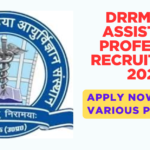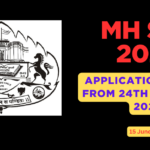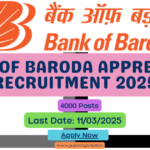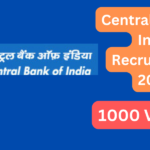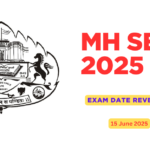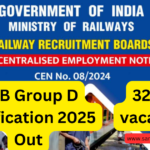The Staff Selection Commission (SSC) conducted the Combined Graduate Level (CGL) Tier-2 examination from 18th to 20th January 2025. This pivotal phase assesses candidates’ proficiency across various subjects, determining their eligibility for numerous Group B and C posts in the Indian government. This article provides an in-depth analysis of the exam, including its pattern, subject-wise breakdown, preparation strategies, and frequently asked questions.
SSC CGL Tier-2 Exam Pattern 2025
Understanding the exam pattern is crucial for effective preparation. The Tier-2 examination comprises multiple papers, each designed to evaluate specific skills:
- Paper I: Compulsory for all posts.
- Paper II: For candidates applying for the Junior Statistical Officer (JSO) position in the Ministry of Statistics and Programme Implementation.
Detailed Structure of Paper I
Paper I is divided into two sessions:
- Session I:
- Section I:
- Module I: Mathematical Abilities
- Module II: Reasoning and General Intelligence
- Section II:
- Module I: English Language and Comprehension
- Module II: General Awareness
- Section III:
- Module I: Computer Knowledge Test
- Section I:
- Session II:
- Data Entry Speed Test (DEST): Assesses data entry speed and accuracy.
Time Allocation and Question Distribution:
- Session I:
- Section I:
- Mathematical Abilities: 30 questions (90 marks)
- Reasoning and General Intelligence: 30 questions (90 marks)
- Duration: 1 hour
- Section II:
- English Language and Comprehension: 45 questions (135 marks)
- General Awareness: 25 questions (75 marks)
- Duration: 1 hour
- Section III:
- Computer Knowledge Test: 20 questions (60 marks)
- Duration: 15 minutes
- Section I:
- Session II:
- DEST: One data entry task
- Duration: 15 minutes
Negative Marking:
- Paper I: 1 mark deducted for each wrong answer in Section I, Section II, and Module I of Section III.
Structure of Paper II (Statistics)
For candidates aspiring to become Junior Statistical Officers:
- Number of Questions: 100
- Maximum Marks: 200
- Duration: 2 hours
- Negative Marking: 0.50 marks deducted for each wrong answer.
Subject-Wise Analysis
1. Mathematical Abilities
This section evaluates candidates’ numerical aptitude and problem-solving skills. Key topics include:
- Number Systems: Computation of whole numbers, decimals, and fractions.
- Algebra: Basic algebraic identities and graphs of linear equations.
- Geometry: Familiarity with elementary geometric figures and facts.
- Trigonometry: Trigonometric ratios and height and distance problems.
- Mensuration: Calculations related to various geometric shapes.
- Statistics and Probability: Use of tables and graphs, measures of central tendency, and probability calculations.
Difficulty Level: Moderate to Difficult
Preparation Tips:
- Focus on understanding fundamental concepts.
- Practice a variety of problems to enhance speed and accuracy.
- Utilize previous years’ question papers for pattern recognition.
2. Reasoning and General Intelligence
This section tests logical thinking and analytical abilities. Topics include:
- Analogy and Classification: Identifying relationships and categorizing.
- Series: Completing number and alphabetical series.
- Coding-Decoding: Deciphering patterns and codes.
- Puzzles: Solving complex arrangements and sequences.
- Venn Diagrams: Interpreting and analyzing data sets.
Difficulty Level: Easy to Moderate
Preparation Tips:
- Regularly practice different types of reasoning questions.
- Develop strategies for time management during the exam.
- Engage in mental exercises to enhance cognitive abilities.
3. English Language and Comprehension
This section assesses proficiency in English, including:
- Grammar: Spotting errors and sentence correction.
- Vocabulary: Synonyms, antonyms, and idiomatic usage.
- Comprehension: Understanding and interpreting written passages.
- Sentence Rearrangement: Organizing sentences logically.
Difficulty Level: Moderate
Preparation Tips:
- Read extensively to improve comprehension skills.
- Practice grammar exercises to strengthen fundamentals.
- Expand vocabulary through regular learning of new words.
4. General Awareness
This section gauges awareness of current events and general knowledge:
- Current Affairs: National and international events.
- History and Geography: Significant historical events and geographical facts.
- Economy and Polity: Basic economic principles and political systems.
- Science: General scientific concepts and discoveries.
Difficulty Level: Moderate
Preparation Tips:
- Stay updated with daily news and events.
- Refer to standard GK books and magazines.
- Review previous years’ questions to identify important topics.
5. Computer Knowledge Test
This module tests basic computer proficiency:
- Fundamentals of Computers: Hardware, software, and operating systems.
- Internet and Networking: Basics of internet usage and network concepts.
- MS Office: Familiarity with Word, Excel, and PowerPoint.
Difficulty Level: Easy
Preparation Tips:
- Understand basic computer terminologies and functions.
- Practice using MS Office applications.
- Familiarize yourself with common internet and networking concepts.
Preparation Strategies
- Time Management: Allocate specific time slots for each subject.
- Mock Tests: Regularly attempt mock tests to simulate exam conditions.
- Revision: Periodically review
Frequently Asked Questions (FAQs)
1. What is the purpose of the SSC CGL Tier-2 exam?
The Tier-2 exam is designed to test candidates’ subject knowledge and skills for various government posts. It includes sections on quantitative abilities, reasoning, English comprehension, and general awareness, among others.
2. What was the difficulty level of the SSC CGL Tier-2 exam held from 18-20 January 2025?
The overall difficulty level of the exam varied across sections:
- Mathematical Abilities: Moderate to difficult
- Reasoning and General Intelligence: Easy to moderate
- English Language and Comprehension: Moderate
- General Awareness: Moderate
3. What is the marking scheme for the Tier-2 exam?
The marking scheme varies by paper:
- Mathematical Abilities, Reasoning, English, and General Awareness: 3 marks per correct answer and 1 mark deducted for incorrect answers.
- Paper II (Statistics): 2 marks per correct answer and 0.50 marks deducted for wrong answers.
4. How can I prepare effectively for the SSC CGL Tier-2 exam?
- Understand the Syllabus: Focus on high-weightage topics.
- Regular Practice: Attempt mock tests and solve previous years’ question papers.
- Time Management: Allocate dedicated time to weaker areas.
5. What is the importance of the DEST in Tier-2?
The Data Entry Speed Test (DEST) assesses typing accuracy and speed, crucial for posts requiring regular data handling tasks.
6. Is there any sectional cutoff in Tier-2?
Yes, there are sectional cutoffs. Each section has its own qualifying marks, which candidates must meet to proceed to the next stage.
7. What documents should I carry to the Tier-2 exam center?
Candidates must carry:
- Admit card
- Government-issued photo ID (Aadhar, PAN, Passport, etc.)
- Two passport-sized photographs
- Any additional documents mentioned in the admit card instructions
8. When will the SSC release the answer key for the Tier-2 exam?
The SSC typically releases the provisional answer key within 10–15 days of the exam. Candidates can check their responses and raise objections if necessary.
9. What is the next step after clearing Tier-2?
Candidates who qualify for Tier-2 will move to the next stage, which includes:
- Tier-3 (Descriptive Test)
- Tier-4 (Skill Test/Document Verification)
10. Where can I find authentic resources for preparation?
- Official SSC website (ssc.nic.in)
- Standard books like Kiran’s, R.S. Aggarwal, and Arihant Publications
- Online mock tests and study portals
Latest Posts
- DrRMLIMS Assistant Professor Recruitment 2025: Apply Now for 177 Various Positions
- MH SET 2025 Application Starts from 24th February 2024: Complete Details
- Bank of Baroda Apprentice Recruitment 2025: Apply Now for 4,000 Posts
- Union Bank of India Apprentice Recruitment 2025: Apply for 2,691 Posts
- Central Bank of India Credit Officer Recruitment 2025

